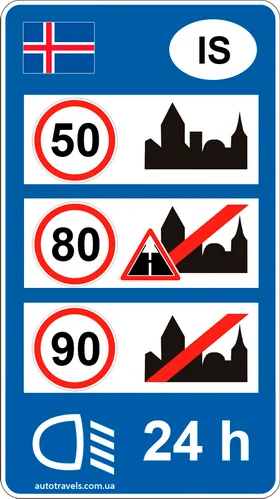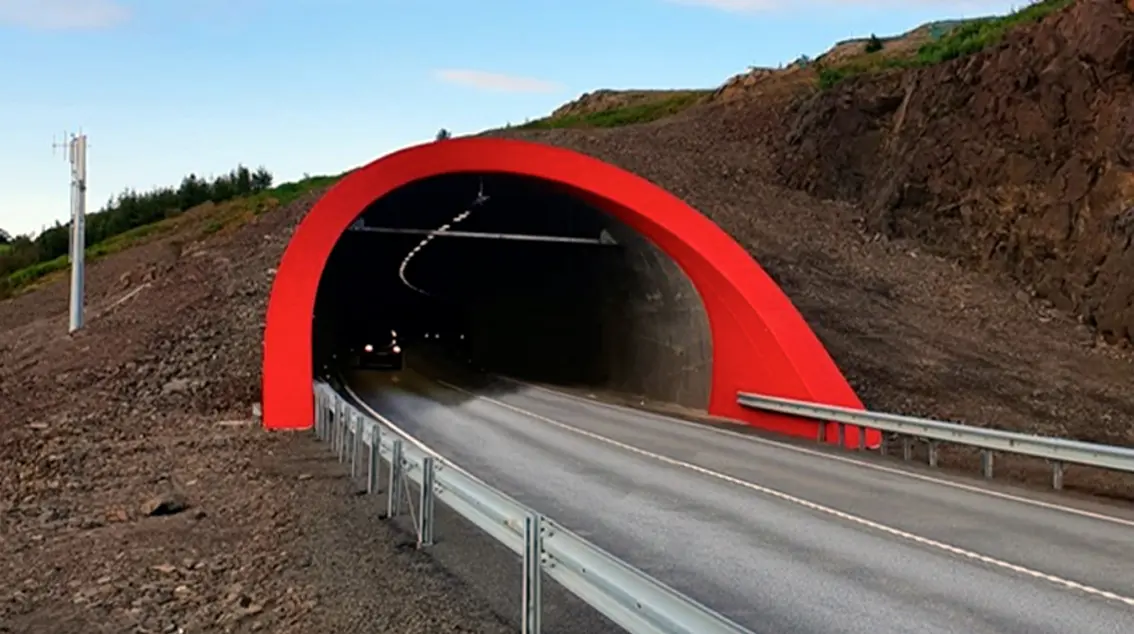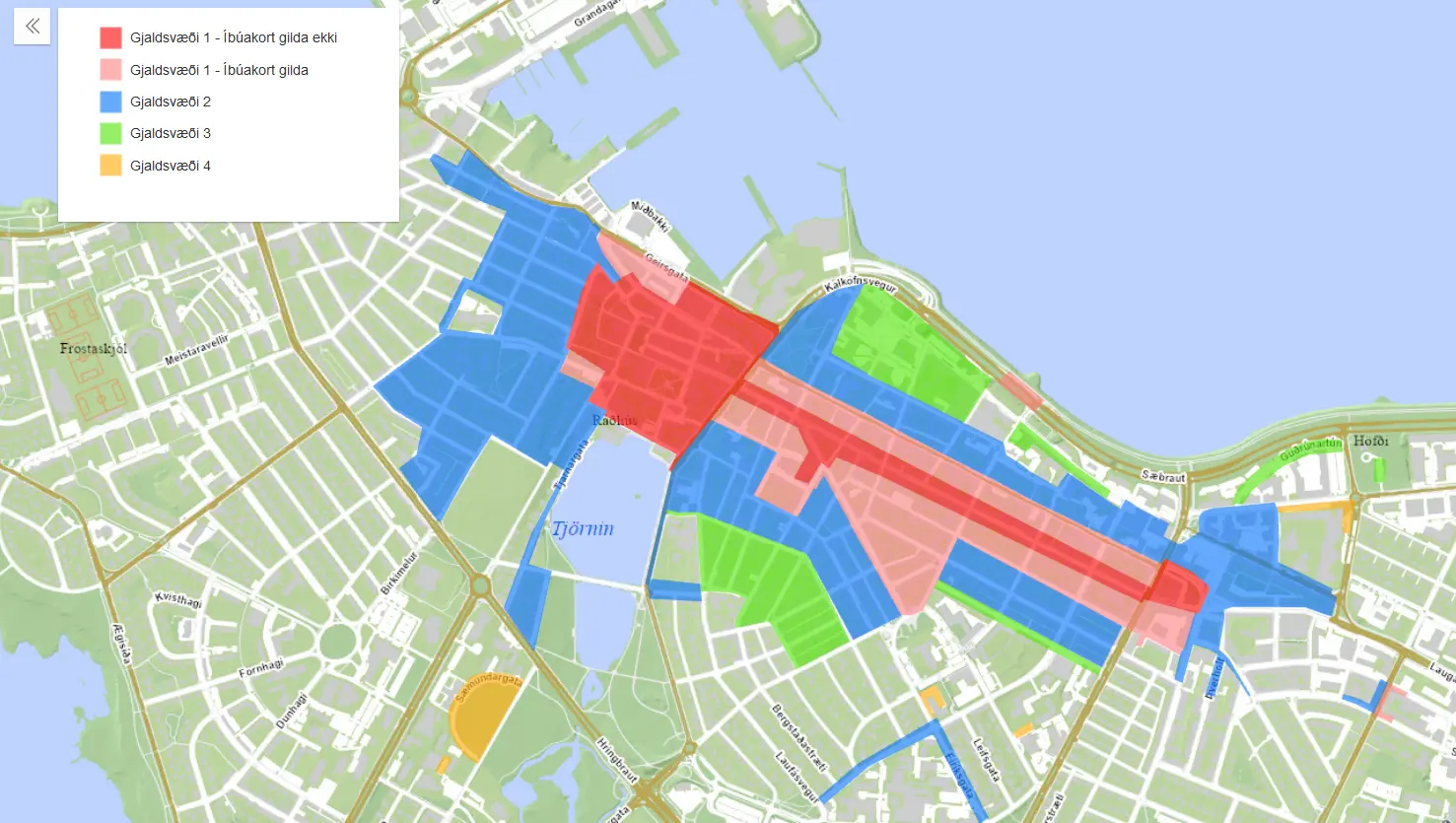
 Iceland
Iceland
- TitleColor: #333333
- DateColor: #999999
- SizeFont: 60
- FlagImg URL: /images/flags/Flag_of_Iceland.svg
- TitleImageSizes: 1900,1440,720
Iceland – Contents
General Information Toll Roads Roads features Speed Limits Petrol Parking Insurance Car Equipment TiresGeneral Information
About roads, speed limits, mandatory car equipment, and some traffic rule requirements. In the sections below, you can read more detailed information about toll roads, gasoline prices, parking, speed limits, etc.
| payment for using roads is not required, except for the Vaðlaheiðargöng tunnel | |
 |
urban area – 50 km/h outside urban area (gravel) – 80 km/h outside urban area (asphalt) – 90 km/h dipped beam is mandatory at all times |
| maximum blood alcohol level 0.5 ‰ talking on the phone while driving is prohibited |
|
| winter tires are mandatory from November 1st to April 14th, chains are allowed only on snow or ice, studded tires are allowed from November 1st to April 14th |
|
mandatory equipment:
|
|
| seat belts are mandatory for all passengers child seat/booster is mandatory for children up to 15 years old and with a height up to 150 cm |
Toll Roads
No tolls are required for road usage, except for passage through the Vaðlaheiðargöng tunnel.
Passage through Vaðlaheiðargöng Tunnel

Vaðlaheiðargöng is a toll tunnel located in northern Iceland along Highway 1, east of Akureyri, running between Eyjafjörður and Fnjóskadalur. It spans 7.4 kilometers and replaces a 21-kilometer stretch of Route 1, including the Víkurskarð Pass, which is often closed in winter. The tunnel shortens the distance between Akureyri and Húsavík by 16 kilometers. It is the only toll road in Iceland.
Vaðlaheiðargöng Tunnel on Google Maps
| Vehicle Type | Tariff | |
|---|---|---|
  |
Cars (with trailer) weighing up to 3.5 tons | 1990 ISK (€ 13.45) |
 |
Vehicles from 3.5 to 7.5 tons | 2800 ISK (€ 18.93) |
Payment Methods
Payment must be made 24 hours before or within 24 hours after passing through the tunnel. This can be done online on the website https://www.veggjald.is/en or by downloading the mobile application from this site. It's worth noting that discounts are available for frequent trips, such as 10, 50, and more.
For more information on toll rates, visit the Vaðlaheiðargöng Tunnel website.
Features of Roads in Iceland

Beginning of Gravel Road Sign in Iceland, Reduce Speed to 80 km/h
Iceland has many roads with gravel surfaces. When transitioning from paved to gravel road, it's advisable to reduce speed to maintain control of the vehicle.
Gravel roads are often narrow, so exercise caution when encountering oncoming traffic, and keep as far to the right as possible.

Blind Hill Sign in Iceland
Exercise caution when approaching blind hills, especially when lanes are undivided, and visibility beyond the hill is limited.


One-Lane Bridge and One-Lane Tunnel Signs in Iceland
One-lane bridges and tunnels are encountered. The rule of passage is that the closer a vehicle is to the bridge, the more right of way it has. However, it's better to stop and try to understand the intentions of the other driver.
Speed Limits

Standard speed limits in Iceland (unless otherwise indicated on signs).
Cars and motorcycles:- Within built-up areas – 50 km/h
- Outside built-up areas (gravel) – 80 km/h
- Outside built-up areas (asphalt) – 90 km/h
- Within built-up areas – 50 km/h
- Outside built-up areas (gravel) – 80 km/h
- Outside built-up areas (asphalt) – 80 km/h
Low Beam Headlights
Low beam headlights are mandatory at all times.
Gasoline Prices in Iceland
Parking in Iceland
Parking in Reykjavik
Central Reykjavik is divided into four parking zones, each with different tariffs. Parking fees are usually charged from 09:00 to 21:00 on weekdays and Saturdays; from 10:00 to 21:00 on Sundays, with some exceptions.

Parking Tariffs in Reykjavik
| Zone | Hourly Rate | Paid Hours |
|---|---|---|
| P1 (Red and Pink) | 600 ISK (€ 4.05) | Mon-Sat 09:00-21:00 Sun 10:00-21:00 |
| P2 (Blue) | 220 ISK (€ 1.48) | Mon-Sat 09:00-21:00 Sun 10:00-21:00 |
| P3 (Green) | 220 ISK (€ 1.48) - first 2 hours 65 ISK (€ 0.44) - subsequent |
Mon-Fri 09:00-21:00 |
| P4 (Orange) | 220 ISK (€ 1.48) | Mon-Fri 08:00-16:00 |
During some public holidays, parking within zones is also free. On these days, you will not be charged when attempting to pay for a parking space, regardless of whether you use a regular parking meter or a mobile app.
Many parking details can be found on Reykjavik's website.
Parking in Akureyri
Akureyri, also known as the capital of North Iceland, is the second largest city in Iceland. Like in Reykjavik, there are paid parking zones in the city center, and most parking spaces on the outskirts of the city are free. Parts of the zones have a maximum parking time of 2 hours, so you need to check the information on road signs.
| Zone | Hourly Rate |
|---|---|
| P1 (Pink) | 200 ISK (€ 1.35) |
| P2 (Blue) | 100 ISK (€ 0.67) |
Parking Near Tourist Places
Most parking lots near tourist spots are free. However, we strongly recommend always looking out for any signs indicating any fees. As Iceland builds more infrastructure and service buildings, sometimes landowners decide to charge for services. Payment can be made with both bank cards and through a special website. For example, places like Fagradalsfjall volcano, Skaftafell, Reykjanes lighthouse use the Parka app, but there are also cashiers on the parking lots for payment.
Some places still operate on an honor system, and you will find cash boxes to pay for services on-site. This is probably the only place where you cannot pay by card, so it's good to have cash or coins.
Mandatory Equipment
Equipment that must be in the car:| Emergency stop sign |
| First aid kit | |
| Fire extinguisher | |
| Spare bulbs |
Winter Tires, Studded Tires, Chains
| Winter and summer tires are allowed throughout the year.
Requirements for tires in winter or summer differ in tread depth.
In winter, the tread depth must be at least 3 mm. The use of winter tires (with a tread depth of at least 3 mm) in Iceland is mandatory from November 1 to April 14 (dates may vary depending on the season). |
|
| Snow chains are allowed to be used under appropriate weather conditions. | |
| Studded tires are allowed to be used from November 1 to April 14. Local authorities may extend this period. |
 travels
travels Albania
Albania Andorra
Andorra Austria
Austria Azerbaijan
Azerbaijan Belarus
Belarus Belgium
Belgium Bosnia and Herzegovina
Bosnia and Herzegovina Bulgaria
Bulgaria Croatia
Croatia Cyprus
Cyprus Czech Republic
Czech Republic Denmark
Denmark Estonia
Estonia Finland
Finland France
France Georgia
Georgia Germany
Germany Greece
Greece Hungary
Hungary Ireland
Ireland Italy
Italy Kosovo
Kosovo Latvia
Latvia Liechtenstein
Liechtenstein Lithuania
Lithuania Luxembourg
Luxembourg Malta
Malta Moldova
Moldova Monaco
Monaco Montenegro
Montenegro Netherlands
Netherlands North Macedonia
North Macedonia Norway
Norway Poland
Poland Portugal
Portugal Romania
Romania Russia
Russia San Marino
San Marino Serbia
Serbia Slovakia
Slovakia Slovenia
Slovenia Spain
Spain Sweden
Sweden Switzerland
Switzerland Turkey
Turkey Ukraine
Ukraine United Kingdom
United Kingdom